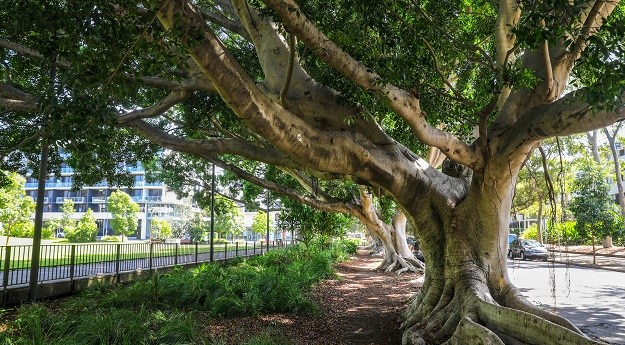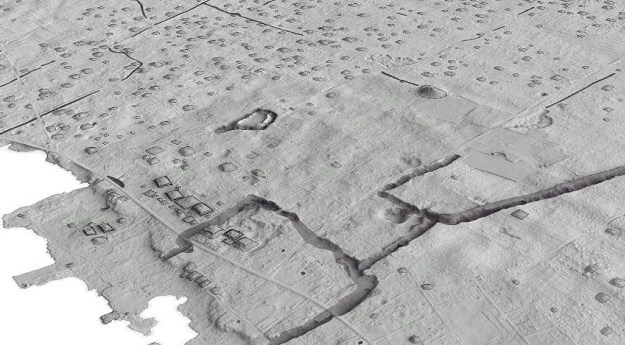JON FAIRALL
Australians may still be locked into a grand debate between climate change sceptics and Greenies, but the polar bears are in no doubt. Neither are the world's oil companies. As the Arctic ice sheet collapses, the bears are heading south into the steaming heat of the Canadian steppes and the oil prospectors are heading north.
So are the cartographers. In fact, the opening up of the Arctic will provide one of the last great opportunities on Planet Earth for surveyors to measure what no one has measured before.
The ice is retreating. In 2007, for the first time in recorded history – and possibly the first time in 16 million years – an ice-free passage opened up across the north of Canada through the fabled Northwest Passage. On the other side of the Arctic Ocean, the past three summers have seen an ice-free passage between Murmansk and Vladivostock .
As a result, all the nations of the Arctic are rushing to carry out hydrographic surveys on icebreakers. Canada's largest icebreaker, the Louis St Lawrence left Resolute on Cornwallis Island last month on just such a mission in the Beaufort Sea.
But her captain, Mark Rothfield, says hydrographic surveys in support of oil and gas exploration are only half the justification for the trip. The Europe- China Arctic route is about 7000 km shorter than the route via either Panama or Suez, plus it can take ships of any size.
So inevitably, as the ice melts, commercial shipping will follow. This means that improved charts and navigation along the Arctic shoreline are a priority, and both Canadian and Russian hydrographic services are moving into top gear.
For environmentalists, the retreat of the ice is proof positive of global warming. It may be possible to argue over whether this is the result of human activity, but it is no longer possible to argue over whether or not climate change is upon us. The real issue is whether the warming of the Arctic constitutes a tipping point. Vast amounts of methane and carbon are locked in the Arctic permafrost. If it melts, the result could be a runaway greenhouse – with totally unpredictable results.
It could be a disaster. It is certainly an opportunity. In May this year, the US Geological Survey estimated that 22 per cent of the world's undiscovered energy resources lie north of the Arctic circle.
Of these figures, more than half of the undiscovered oil resources are estimated to occur in just three geologic provinces – in the Arctic Alaska, Amerasia and East Greenland Rift basins. More than 70 per cent of the undiscovered natural gas is thought to be in the West Siberian, East Barents and Arctic Alaska basins.
The bottom line: the continental margins under the Arctic Sea constitute the largest unexplored regions left on Earth. If significant undiscovered oil and gas deposits exist, that's where they are. With the Arctic ice receding and predictions that the North Pole will be ice-free within the decade, the way is open for oil companies to begin prospecting. But there are several issues to be resolved before the oil starts to flow. The first and most significant one: who has the right to exploit the riches of the seabed?
The United Nations Convention on the Law of the Sea is explicit. The UN has clearly laid down rules. Under those rules, coastal states have a right to exploit the continental shelf out to 200 nautical miles (370 km) from their shoreline. They may also claim rights to exploit the Extended Continental Shelf (ECS). This is a region beyond 200 but less than 350 nautical miles (650 km) from the shoreline. It must also be less than 100 nautical miles (185 km) from the 2500 metre isobath (i.e. the line connecting water depth of 2500 metres).
Within this region, ECS is established by delineating the outer limits of the continental margin and providing the evidence to the UN. Two types of evidence are relevant: the sedimentary rock formula and the distance formula.
The sedimentary rock formula defines the outer limits of the ECS as the line delineating points on the seabed where the sedimentary rock is at least one per cent of the thickness of the foot of the continental slope. The distance formula also depends on the location of the foot of the slope. It says that the limits of the zone are defined by a line 60 nautical miles from that foot.
Article 76 says the foot of the continental slope 'shall be determined as the point of maximum change in the gradient at its base'. This also requires extensive hydrographic surveys. At the very least, surveyors must be able to completely delineate the continental margin to satisfy this requirement.
But will the nations with claims to the Arctic seabed – Canada, Russia, the US (Alaska), Norway (Spitzbergen) and Denmark (Greenland) – be prepared to allow international law to take its course?
The five Arctic powers met in Greenland in May and promised to abide by a UN process for deciding on ownership of the seabed. 'The five nations have declared they will follow the rules,' said Danish Minister for Foreign Affairs, Per Stig Moller. This is to be expected. The smaller nations have a vested interest in favouring the rule of law.
The position of the major powers is more ambiguous. The US has signed UNCLOS, but the US Senate has not ratified it, preventing the world's most powerful nation from joining in the UN deliberations.
Ratification has been blocked by a few conservative Republican senators, currently led by Oklahoma's James Inhofe, who is famous for dismissing the human contribution to global warming as 'the greatest hoax ever perpetrated on the American people'.
These senators will not cede an inch of US sovereignty to the UN. They apparently find the treaty's designation of the high seas as 'the common heritage of mankind' to be 'intolerably Marxist'.
Underlining US seriousness about opening up the Arctic, the government recently created exploration leases on the seabed in the Chukchi Sea. Shell Oil has bid $2.1 billion to secure 275 of them. This is not legally controversial, although it has dismayed environmentalists. Any attempt to drill in international waters would clearly inflame the situation.
Meanwhile, across the Pole, the Russians have also been flexing their muscles. Last year a Russian team dropped a remotely operated submarine through the ice at the Pole and planted a flag on the seabed. They returned home to a hero's welcome of the type not seen since Yuri Gagarin, the first cosmonaut, returned from outer space.
The reception was cooler elsewhere in the world. 'This isn't the fifteenth century,' protested Peter MacKay, Canada's foreign minister. 'You can't go around the world and just plant flags.'
Russian prime minister Vladimir Putin tried to smooth international hackles: 'I was surprised by a somewhat nervous reaction from our Canadian colleagues. At one time Americans planted a flag on the Moon. So what? The Moon did not pass to United States' ownership.'
But John B. Bellinger III, legal adviser to US secretary of state Condoleezza Rice, said, 'It was a provocative action and took us aback.'
All this outrage may have been a bit overdone. Frederick Cook planted an American flag at what he claimed was the North Pole in 1908, and Robert Peary did the same thing a year later.
All rather amusing – possibly – but earlier this year, Canadian PM Steven Harper signalled that the Arctic was a priority for Canada. Canada has launched a radar satellite, Radarsat 2, explicitly to allow high-resolution monitoring of the northern shore, even in darkness. The Canadian army has begun studies to consider the security implications of several thousands of kilometres of coastline that used to be protected by an impenetrable barrier of ice.
In geographic and geological terms, it would appear that Russia has the best claim of all. Twenty per cent of the country lies above the Arctic Circle, and almost two million Russians live there today. Seen from the Pole, Russian territory subtends 160 degrees, Canada 80 degrees, Denmark 50 degrees, Norway 40 degrees and the US about 30 degrees.
Formally, the Russian claim hinges on an underwater formation called the Lomonosov Ridge, which runs 2000 kilometres from Siberia across the North Pole to Ellesmere Island (Canada's northernmost point). Russia claims this as ECS. Actually, it is claiming only half of the ridge – the half on its side of the Pole.
However, UNCLOS would not support a Russian claim for the Pole itself. It expressly does not support a claim beyond 650 kilometres from the shoreline under any circumstances. The most northerly point in Russia, Ostrov Rudol'fa in Franz Joseph Land, lies about 1000 kilometres from the Pole. The Norwegan island, Nordayslante, is slightly further south. The closest point of land to the Pole – at 700 kilometres – is Kap Morris Jesup at the top of Greenland.
Because of its failure to ratify UNCLOS, the US won't be in a position to vote on Russia's claim. In fact, it will need some fancy footwork if it's going to be a legal player in the scramble for the Arctic at all.
Jon Fairall is the editor of Position Magazine.
Issue 37; October – November 2008













